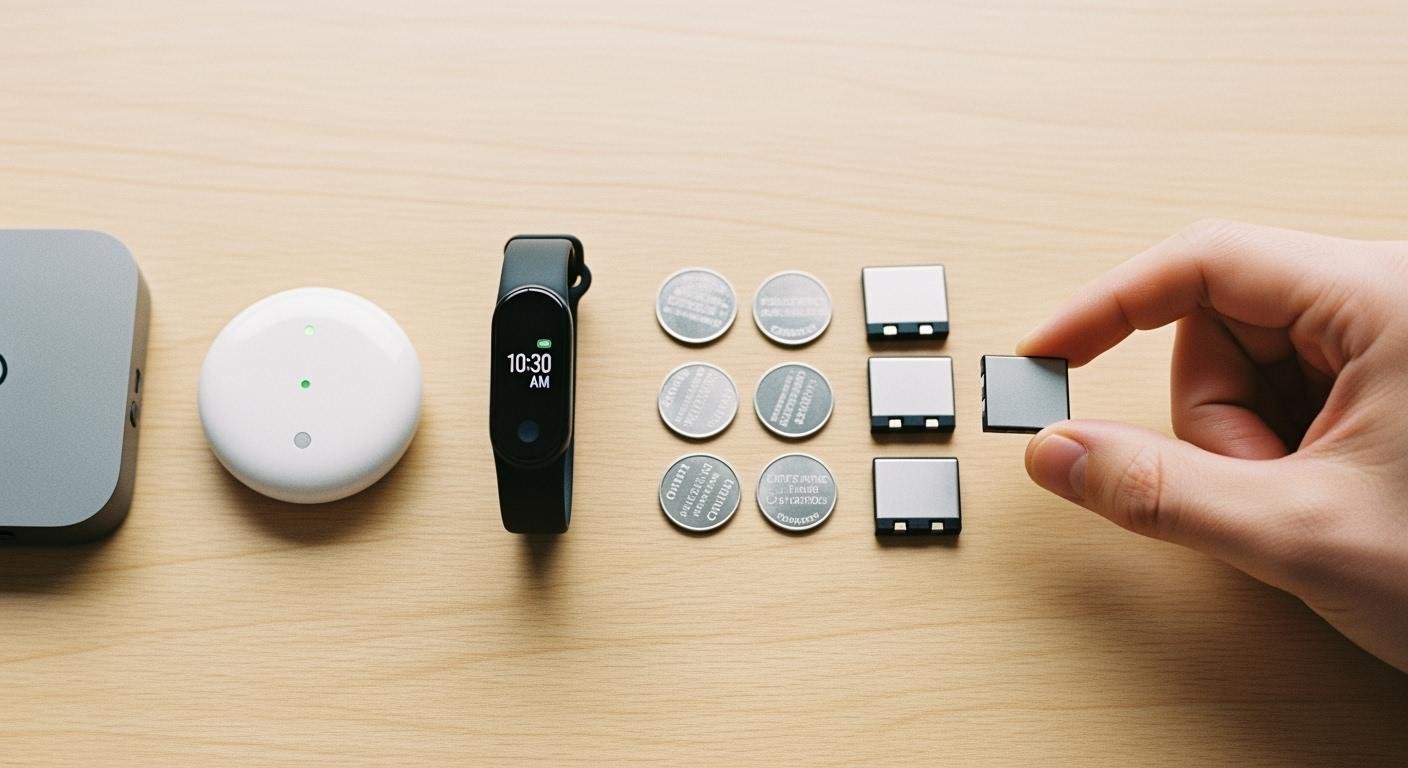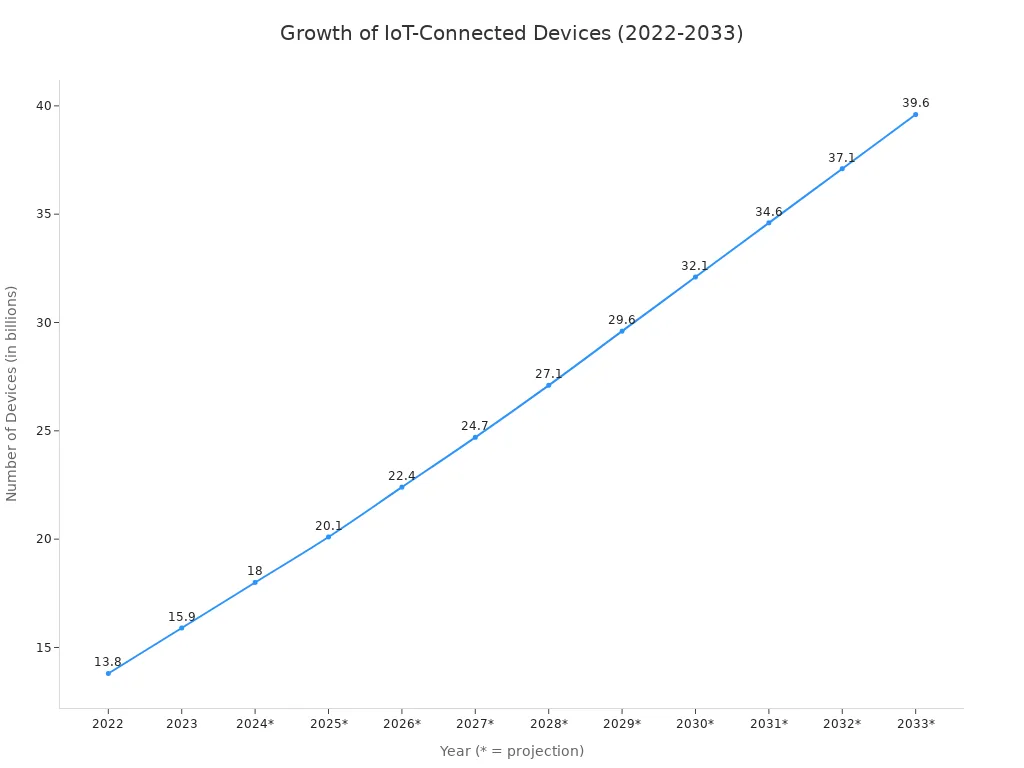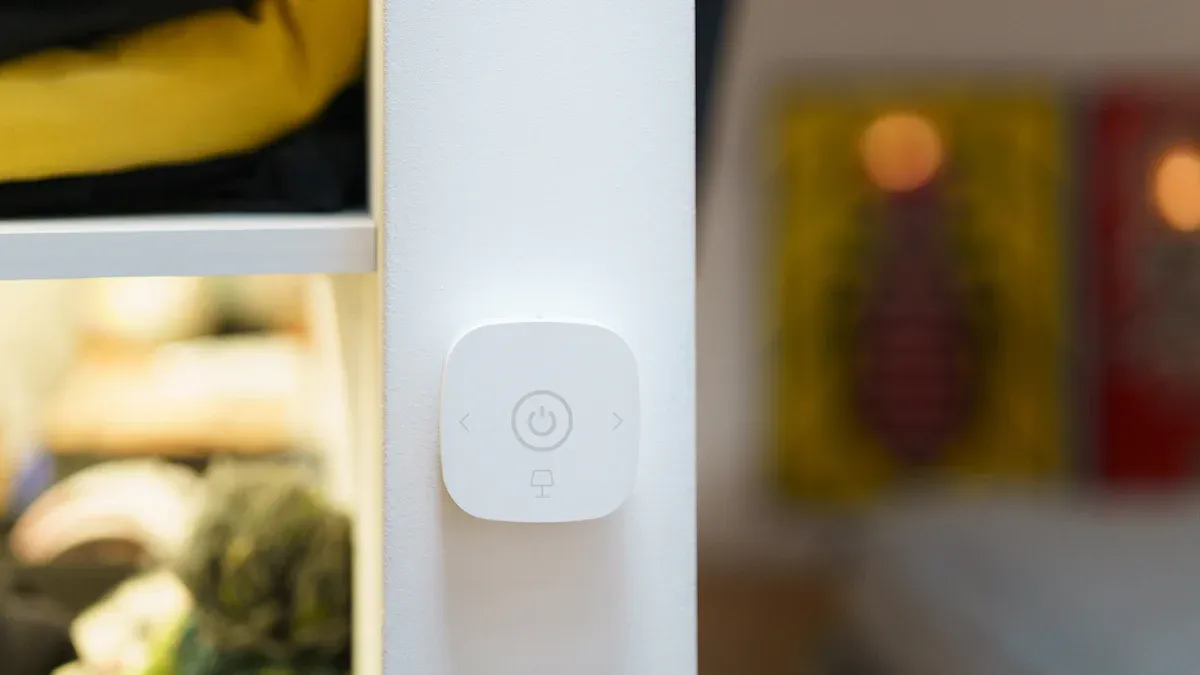
Choosing the right lithium batteries for your product is a critical design decision. You must balance the battery specifications against your device’s unique needs. With the number of connected IoT devices growing rapidly, a smart battery selection process is essential.
| Year | Number Of IoT-connected Devices |
|---|---|
| 2022 | 13.8 billion |
| 2023 | 15.9 billion |
| 2024* | 18 billion |
| 2025* | 20.1 billion |
| 2030* | 32.1 billion |
| 2033* | 39.6 billion |

This guide helps you make that choice intelligently. A successful lithium battery choice considers four core factors: the lithium chemistry, your power budget, the physical fit, and overall lithium battery safety.
Choosing the Right Lithium Batteries Chemistry
Your first major decision is choosing the right lithium chemistry. This choice directly impacts your device’s runtime, cost, and physical design. You must decide between a battery you can recharge and one you use only once. Each path offers distinct advantages for different IoT applications.
Rechargeable vs. Non-Rechargeable Options
Rechargeable lithium batteries are perfect for devices used frequently. Think of smartwatches or medical monitors that you can plug in every day. They have a higher initial cost but save you money over time. You avoid buying replacement batteries.
Non-rechargeable (primary) lithium batteries are ideal for long-term, low-power jobs. You use them in devices placed in remote or hard-to-reach locations. These applications include environmental sensors or smart water meters. The goal is to deploy the device and have the battery last for years without maintenance.
Key Takeaway: Choose a rechargeable battery for high-use, easily accessible devices. Select a non-rechargeable battery for low-power devices that need to run for years on a single charge.
The table below shows common applications for each type. This can help you see where your product fits.
| Battery Type | Primary IoT Applications |
|---|---|
| Rechargeable | Smartwatches, fitness trackers, industrial sensors, asset trackers, drones, and smart home devices. |
| Non-Rechargeable | Smart meters, remote environmental sensors, security systems, and medical devices like pacemakers. |
Li-ion, Li-Polymer, and LiSOCl2 Differences
Within the lithium family, several chemistries dominate the IoT landscape. Each one provides a unique set of benefits.
- Lithium-ion (Li-ion): The Workhorse 🔋 You find Li-ion cells everywhere. They offer a great balance of high energy capacity and a long cycle life. This makes them a default choice for many rechargeable products. The cost of Li-ion lithium batteries can vary based on their internal materials.
| Battery Chemistry | Key Materials | Relative Cost |
|---|---|---|
| LFP (Lithium Iron Phosphate) | Iron and Phosphate | Lower |
| NMC (Nickel Manganese Cobalt) | Nickel and Cobalt | Higher |
-
Lithium-Polymer (Li-Po): The Flexible Option 📏 Li-Po is a type of rechargeable lithium battery. Its main advantage is physical flexibility. Manufacturers can create Li-Po cells in very thin or custom shapes. This makes them perfect for compact devices like modern wearables, smart cards, or any product with a unique form factor.
-
Lithium Thionyl Chloride (LiSOCl2): The Marathon Runner 🏃♂️ This is a non-rechargeable chemistry built for endurance. LiSOCl2 lithium batteries are known for three incredible features:
- Exceptional Energy Density: They pack a massive amount of power for their size. Many LiSOCl2 cells exceed 500 Wh/kg, with some designs reaching up to 710 Wh/kg.
- Wide Temperature Range: They operate reliably in extreme heat and cold, often from -55°C to +85°C.
- Very Low Self-Discharge: A LiSOCl2 battery can sit on a shelf for over 10 years and retain most of its original charge.
These features make LiSOCl2 the top choice for “deploy-and-forget” applications. You will see this powerful lithium chemistry used in:
- Smart Cities: Powering smart meters, traffic sensors, and street light controls.
- Industrial Automation: Running asset trackers and predictive maintenance sensors in factories.
- Healthcare Devices: Providing long-life power for critical patient monitoring tools and drug delivery systems.
Calculating Your IoT Power Budget
After choosing a chemistry, you must create a power budget. This budget is a detailed map of your device’s energy needs. It is the most important step for selecting a battery with the right capacity. A precise budget prevents you from choosing a battery that is too small and fails early, or one that is too large and wastes space and money.
Profile Your IoT Device’s Energy Use
Your first task is to understand your device’s energy consumption patterns. Most iot devices do not draw a constant amount of current. Instead, they cycle between two main states:
- Active Mode: The device is performing its main function, like sensing, processing data, or transmitting over Wi-Fi/Bluetooth. This mode uses the most power.
- Sleep Mode: The device turns off non-essential components to save power. It only wakes up periodically or when triggered by an event.
The difference in power use between these modes is huge. For example, a popular ESP32 microcontroller might draw 95 mA to 240 mA in active mode while using Wi-Fi. In a deep sleep state, its power draw can plummet to just 0.1 µA. Accurately measuring the current in each state and the time spent in each state is essential.
How to Measure Power You need the right tools to get accurate measurements. For dedicated analysis, a tool like the IoT Power Profiler (ZS-2102-A) is designed specifically for this job. You can also use general lab equipment:
- A high-speed digital multimeter (DMM) that can capture rapid changes in current.
- An oscilloscope paired with a current probe to visualize the power profile over time.
Calculate Required Capacity (mAh)
Once you have your power profile, you can calculate the required battery capacity. Capacity is measured in milliamp-hours (mAh). A higher mAh value means the battery can supply a certain current for a longer time. This translates to longer runtime for your device, but it also means a physically larger and heavier battery.
You can calculate the average current your device uses with a simple formula.
-
Calculate Average Current:
Average Current (mA) = ((Active Current × Active Time) + (Sleep Current × Sleep Time)) / Total Cycle Time -
Calculate Required Capacity:
Required Capacity (mAh) = Average Current (mA) × Desired Lifespan (hours)
Let’s use an example. Imagine your device is active for 3 seconds drawing 150 mA and sleeps for 57 seconds drawing 0.01 mA. The total cycle is 60 seconds.
Average Current = ((150 mA × 3s) + (0.01 mA × 57s)) / 60s = 7.51 mA
If you want this device to last for 30 days (720 hours), your calculation would be:
Required Capacity = 7.51 mA × 720 hours = 5407.2 mAh
Don’t Forget Self-Discharge! Every battery slowly loses charge over time, even when not in use. This is called self-discharge. For long-life applications, you must account for this lost energy. Lithium batteries have a low self-discharge rate, often under 5% per month. You should add this loss to your total energy consumption calculation to ensure your chosen lithium battery meets its target lifespan.
Ensure Correct Battery Voltage
Finally, you must match the battery voltage to your device’s requirements. Most thin lithium polymer cells have a nominal voltage of 3.7V. This is the average voltage during discharge. When fully charged, the voltage will be higher, around 4.2V.
Using the wrong voltage can cause serious problems:
- Voltage Too Low: Your device may not turn on, or it might operate unreliably and crash.
- Voltage Too High: You risk permanently damaging sensitive components from overheating and burnout.
You also need to understand that a lithium battery’s voltage is not constant. It changes during the discharge cycle. The process typically has three stages: an initial small drop, a long and stable voltage “plateau” where it spends most of its life, and a final rapid drop as the battery runs out of energy. Your device’s power management circuit must be able to handle this entire voltage range to function correctly from a full charge to empty.
Finding the Right Battery for IoT Devices

Your power budget tells you how much energy you need. Now, you must find a battery that fits your device’s physical shell. Finding the right battery for iot devices means balancing capacity, size, weight, and operating environment.
Matching Physical Size and Weight
A battery’s capacity is directly tied to its size and weight. This relationship is defined by energy density. A battery with higher energy density stores more power in a smaller, lighter package. You must decide what is more important for your product: a longer runtime or a smaller form factor.
| Aspect | Specific Energy Density (Wh/kg) | Volumetric Energy Density (Wh/L) |
|---|---|---|
| Definition | Energy stored per unit of mass. | Energy stored per unit of volume. |
| Application Priority | Critical for portable devices where weight matters. | Crucial for space-constrained systems. |
For some products, weight is a top priority.
- Wearable health monitors
- Medical sensors
- Small, portable iot devices
In these cases, you may need to choose a smaller battery and optimize your device’s software to extend its life.
Form Factors for a Thin Lithium Battery
The shape of your battery is just as important as its size. Lithium polymer (Li-Po) technology gives you incredible design freedom. Unlike rigid cells, a thin lithium battery using Li-Po chemistry comes in a flexible pouch. This allows manufacturers to create custom shapes that fit perfectly into unique or compact products.
Pouch cells are an excellent choice for a thin lithium battery because they are highly efficient. They can use up to 95% of their internal volume for active materials. This maximizes capacity in a small footprint, making them ideal for innovative iot devices.
Considering Operating Temperature
You must consider the environment where your device will operate. Extreme heat or cold can drastically affect a battery’s performance and lifespan.
Standard rechargeable lithium batteries, like Li-ion, struggle in the cold. Low temperatures reduce their available capacity and can cause permanent damage if you try to charge them below freezing. High heat speeds up degradation and shortens the battery’s overall life.
In contrast, non-rechargeable lithium chemistries like LiSOCl2 excel in harsh conditions. They can operate reliably in temperatures from -55°C to +85°C. This makes them the best choice for outdoor sensors or industrial equipment exposed to extreme weather.
Ensuring Safety and Maximizing Lifespan
Choosing the right battery is only half the battle. You must also ensure your lithium battery operates safely and lasts as long as possible. This involves understanding its built-in protections, storage needs, and key safety certifications.
The Importance of a Protection Circuit
A high-quality lithium battery includes a Protection Circuit Module (PCM). This small electronic board is your battery’s bodyguard. It protects the cell from dangerous electrical conditions. You should always use a battery with a PCM to prevent:
- Overcharge: The circuit stops electricity from flowing in when the battery is full. This prevents damage and potential hazards.
- Over-discharge: It cuts power if the voltage drops too low. This protects the cell’s internal structure and preserves its lifespan.
- Overcurrent and Short-Circuit: The PCM instantly shuts down the battery if it detects an unsafe power draw or a short circuit, preventing overheating and fire.
Best Practices for Charging and Storage
How you store your device impacts its battery health. For long-term storage, you should not leave your lithium battery fully charged or completely empty.
Pro Tip: Store your lithium battery with a charge level between 30% and 50%. This state is less volatile and significantly extends its service life. For safety, regulations even require shipping batteries at a 30% charge.
Temperature is also critical. Storing your device in a cool, dry place is best. The ideal storage temperature is around 15°C (59°F). Avoid leaving your product in hot cars or freezing conditions, as extreme temperatures can permanently reduce capacity.
Understanding Key Safety Certifications: UN38.3, CE, RoHS
Certifications prove that a battery meets global safety standards. You should look for these key marks:
- UN38.3: This is a global standard for safely transporting lithium batteries. To pass, the battery must survive eight rigorous tests, including vibration, shock, and short circuit simulations.
- CE: The CE mark shows a product can be sold in Europe. It certifies that the product meets high safety, health, and environmental rules.
- RoHS: This directive restricts hazardous substances in electronics. While batteries are regulated by a separate Battery Directive in Europe, RoHS compliance for the overall device ensures it is free from harmful materials like lead and mercury.
Choosing the right lithium batteries for your iot device is a balancing act. You learned to weigh chemistry, calculate your power budget, match the physical fit, and ensure safety. The best battery is not the one with the highest capacity, but the one that best fits your product’s specific needs.
Final Tip: Always Test Your Battery! 🧪 You must prototype and test your chosen battery in real-world scenarios before mass production. Skipping this critical step risks dangerous failures like thermal runaway, where the battery can overheat, catch fire, or release hazardous gases.
FAQ
What is the biggest mistake when choosing an IoT battery?
The most common mistake is guessing your power needs. You should always measure your device’s power consumption in both active and sleep modes. An inaccurate power budget leads to choosing the wrong battery and poor device performance.
Can I just use a battery with a higher mAh for longer life?
Yes, a higher mAh rating provides longer runtime. However, it also means the battery will be physically larger and heavier. You must make sure the bigger battery still fits inside your product’s design and meets your weight requirements.
How do I know if a battery has a protection circuit (PCM)?
You can find this information on the battery’s technical datasheet. Reputable suppliers always list safety features like the PCM. If you are unsure, you should always ask the manufacturer directly before you purchase the battery.
What does “cycle life” mean for a rechargeable battery?
Cycle life tells you how many times you can charge and discharge a battery before its capacity drops. For example, a cycle life of 500 means the battery can handle 500 full cycles before it starts to hold significantly less charge.

